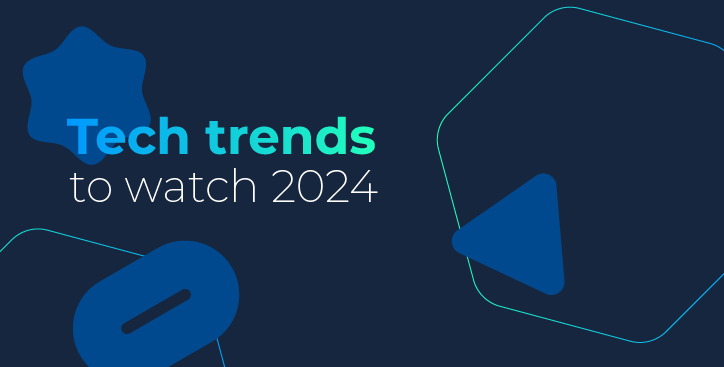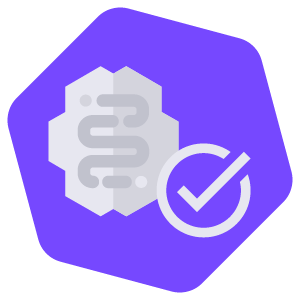Tech trends to watch in 2024
By Alex Hawkes|8 January, 2024

The past year has seen a transformational change in the cloud computing landscape, spearheaded by the advent of AI technology, the ongoing economic challenges for businesses to achieve successful results, and the evolving data regulations surrounding security and privacy.
To navigate these changes, and create future opportunities, here are the major trends for 2024 and beyond.
 Massive growth in cloud spending
Massive growth in cloud spending
The surest prediction for 2024 will be the continued and massive spending growth on cloud computing infrastructure, which will be partially driven by the widespread adoption of generative AI applications such as large language models like OpenAI's ChatGPT and Google's Bard.
Consequently, we are going to see an equally large spending growth by organisations moving their mission-critical applications into the cloud so that most, if not all, of their operations will co-exist within a multi-cloud infrastructure.
This migration will make companies more agile, innovative, and efficient. However, moving vast amounts of data in and out cloud environments will come with significant challenges in terms of data security and protection issues, especially if you are using the public internet, and this will likely boost the demand for a private connectivity solution.

Simplified networks
While it’s true that more businesses are embracing a hybrid or multi-cloud strategy, what’s less clear is how they are going to stitch these different cloud environments together in a seamless fashion, which can not only incredibly complex and expensive, but is also complicated by the issues of data sovereignty and governance.
For that reason, large companies will start to explore how they can simplify their network infrastructure to eliminate wasteful resources while maintaining high-speed performance and connectivity.
This is clearly fueling the growth in Software Defined Cloud Interconnects (SDCI) and Network-as-a-Service (NaaS) which can monitor and maintain a safe and private network on their behalf, making it easier for businesses to operate multi-cloud services through a single management portal.
 AI as a Service
AI as a Service
AI is the biggest game in town right now and everybody in cloud computing is talking about it. The difference in 2024, I believe, is that AI will emerge from an intangible concept to a coming-of-age reality.
Every organisation is now asking the same question, which is how they can embed these AI applications into their operations.
However, because AI demands vast amounts of data and compute power, we are going to see a surge in AI as a service (AIaaS) whereby businesses who don’t have the resources or technological expertise can access AI tools through a cloud provider.
From a connectivity perspective, this will still require a very high-speed, high-quality network to maximise AI’s potential, so businesses may also need to rethink their current network.

Tighter AI regulations
We are going to face new and tighter regulations governing the use of AI around the globe in 2024, with more countries securing their digital borders. The EU’s AI Act, which will be adopted in the new year, is perhaps the most significant.
Specifically designed to address the risks of AI governance, the act outlines a series of requirements that intend to safeguard “the health, safety, and fundamental rights of EU citizens and beyond,” and is expected to have a significant impact worldwide.
Keeping abreast of this evolving regulatory landscape is going to be challenging to say the least, and the understanding of localization of data within the boundaries of jurisdictions is becoming a top priority.
With the explosion of data growing exponentially, and with data sources becoming more fragmented and sitting in lots of separate places, companies will need to manage how their data is being moved around. If their networks are not secure, then cracks will soon appear.
 Data security and privacy
Data security and privacy
There’s no question that security will sit at the top of everyone’s new year resolutions list in 2024.
It is no longer a question of whether a data breach will happen, but when. These cyber attacks will increase over the next few years, especially with hackers deploying AI-powered tactics to get to your data.
The protection of personal data will be another major concern, perhaps the major concern, and businesses will need to closely examine the security and resilience of their network infrastructure and decide if they need to move to a private network environment.
Simply put: if you are connecting over the public internet then you are exposed.
 Pay-As-You-Go networking
Pay-As-You-Go networking
Unsurprisingly, cloud costs will continue to be expensive in 2024 and beyond.
This will become quickly apparent for businesses who start to pull enormous quantities of data out of the cloud and then suddenly find themselves stung by hefty bills.
These costs – called egress charges – are how the major cloud providers make most of their money, and they can be massive.
At some point, however, these cloud providers will have to start listening to their customers’ concerns about these ‘hidden’ fees. It will be an interesting conversation. Meanwhile, as more businesses seek to save money, it makes sense to look at Direct Connection services and Pay-As-You-Go models offered by NaaS providers.
Here you only pay for the network resources you use, turning private connections up and down to meet your different workloads, which further reduces capital expenditure and frees up time to focus on your core business activities.
 Addressing the skills shortage dilemma
Addressing the skills shortage dilemma
While businesses will rush to implement AI technology across their network infrastructure in 2024, the journey toward an automated future may not be as straightforward as it appears.
It requires a highly skilled workforce capable of managing and monitoring multiple data assets and extracting meaningful insights from them.
This is where the problem lies. There is a huge demand for data analysis proficiency and the knowledge to train AI models, yet there is a widening skills shortage which is now becoming critical.
The financial, retail, healthcare, and telecom sectors are all struggling to recruit data scientists, data analysists, and the required software development skillsets to embrace the opportunities which AI promises.
With key skills in short supply, I think we will see more businesses pivoting towards a managed services solution whereby everything in their network is taken care of externally by a team of technical experts.
Businesses won’t need to worry about security, connectivity, or data privacy issues, and they won’t have to overhaul their current infrastructure to boost their AI performance. All they need to do is plug in and play – which is a very appealing prospect.


.jpg)





.jpg)
